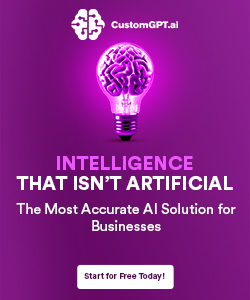There’s a fascinating world of artificial intelligence waiting for you to explore. In this guide, you will uncover how AI systems operate, the underlying technologies that drive them, and the real-world applications transforming various industries. By the end, you will have a clear understanding of AI concepts, helping you not only grasp its potential but also navigate the future of technology with confidence.
Types of Artificial Intelligence
Artificial Intelligence is an evolving field with various types, each categorized based on functionality and capabilities. The types include:
- Narrow AI
- General AI
- Superintelligent AI
- Reactive Machines
- Limited Memory AI
Assume that understanding these types will help you appreciate the vast landscape of AI technology.
Narrow AI
Clearly, Narrow AI refers to artificial intelligence systems designed to handle specific tasks or problems, such as voice assistants or recommendation algorithms. These programs excel at their designated functions but lack generalization across different domains.
General AI
Some might consider General AI as the holy grail of artificial intelligence, aiming to emulate human-like understanding and reasoning across a broad range of tasks. Unlike Narrow AI, General AI can think and learn like a human.
To achieve true General AI, systems would need to replicate the human cognitive ability to learn from experience, adapt to new situations, and understand complex concepts. This level of intelligence remains largely theoretical at present, but it is a significant focus of AI research.
Superintelligent AI
Clearly, Superintelligent AI represents a level of artificial intelligence that surpasses human intelligence in virtually every domain, including creativity, problem-solving, and emotional understanding. This type of AI is the subject of much speculation and debate.
This concept raises important ethical and safety considerations, as a Superintelligent AI could potentially possess abilities far beyond human control. Ensuring its alignment with human values and objectives is paramount to mitigate risks associated with such advanced technology.
| Type of AI | Description |
|---|---|
| Narrow AI | Specialized for specific tasks. |
| General AI | Human-like cognitive abilities. |
| Superintelligent AI | Exceeds human intelligence. |
| Reactive Machines | Responds to specific stimuli. |
| Limited Memory AI | Uses past data for decision-making. |
How AI Works: Step-by-Step Process
Clearly, understanding how AI works requires breaking down its processes into manageable steps. The journey of artificial intelligence begins with data and culminates in delivering insights and decision-making support. Below is a simplified overview of this multi-faceted procedure:
| Step | Description |
|---|---|
| Data Collection | Gathering data from various sources. |
| Data Processing | Cleaning and organizing collected data. |
| Algorithm Creation | Designing algorithms to analyze data. |
| Model Training | Teaching the AI to recognize patterns. |
Data Collection
Clearly, data collection is the foundational step in the AI process. You need to gather relevant information from various sources, such as sensors, websites, databases, or user inputs. This stage ensures that the AI has enough data to learn and make informed decisions.
Data Processing
There’s a significant need for data processing, transforming raw data into a structured format that AI can utilize. You clean and organize the data, eliminating discrepancies and irrelevant information. This step enhances the quality and usability of data for the subsequent phases.
Step by step, effective data processing involves several techniques like normalization, filtering, and aggregating. Each method ensures that the data is precise and fits the AI’s requirements. You manage this crucial process to prepare the dataset, gearing it for insightful analyses.
Algorithm Creation
Clearly, algorithm creation involves formulating the mathematical models that enable AI to interpret data. You define rules and procedures that guide the AI in making decisions and predictions based on the processed data.
Algorithm development is extensive. You input specific parameters and variables that dictate how the AI will analyze information. The effectiveness of your AI solution depends largely on the strength and appropriateness of the algorithms you create, allowing for precise and relevant outcomes.
Model Training
Clearly, model training is where the real learning happens. You expose the AI model to the processed data and tune its parameters to recognize patterns and make decisions accordingly.
Creation of a robust AI model requires iterations. You repeatedly adjust and refine the model based on testing outcomes, ensuring it learns accurately from the data provided. Each training session enhances the model’s capability, guiding it toward achieving higher levels of accuracy and reliability in performing tasks.
Key Factors Influencing AI Performance
Not all artificial intelligence systems perform equally. Several key factors contribute to their effectiveness:
- Data Quality
- Computational Power
- Algorithm Design
- Ethical Considerations
Thou should pay attention to these elements to understand how AI can be optimized for better outcomes.
Data Quality
While the performance of AI models heavily relies on the quality of the data used for training, poor data can lead to biased or ineffective outcomes. High-quality, well-structured data ensures that your AI system delivers accurate predictions and reliable results.
Computational Power
Power and efficiency in computation play a vital role in the performance of AI systems. More powerful hardware enables quicker data processing, which allows for the utilization of complex algorithms and larger datasets.
With advancements in cloud computing and specialized hardware like GPUs, you have access to greater computational resources, enabling more sophisticated AI models. This boost in computational power can significantly enhance the efficiency and speed of training and inference, resulting in a more effective AI solution.
Ethical Considerations
Powerful AI systems necessitate a careful understanding of ethical implications to ensure responsible usage. Ensuring fairness, transparency, and accountability in AI can prevent harmful consequences for users and society.
Ethical considerations should be integral to your AI strategy. By implementing values like fairness, accountability, and transparency, you can mitigate risks associated with biases and unintended consequences, fostering trust in your AI solutions while promoting positive societal outcomes.
Pros and Cons of Artificial Intelligence
Many people often discuss the advantages and drawbacks of artificial intelligence. Understanding these aspects can help you make informed decisions regarding the incorporation of AI in your daily life or work. Below is a summary of the pros and cons:
| Pros | Cons |
| Increased Efficiency | Job Displacement |
| Improved Accuracy | High Initial Costs |
| 24/7 Availability | Data Privacy Concerns |
| Scalability | Dependence on Technology |
| Enhanced Decision Making | Ethical Issues |
Advantages of AI
There’s no denying that artificial intelligence brings a host of benefits to various fields. It enhances productivity, allows for 24/7 operation, and improves accuracy in data-driven tasks. By integrating AI into your processes, you can streamline workflows and make more informed decisions, ultimately leading to better outcomes and increased efficiency.
Disadvantages of AI
Pros and cons aside, there are significant concerns about the influence of artificial intelligence in your life. Job displacement is a major issue, as automation can replace certain positions, leading to unemployment in specific sectors. Additionally, data privacy concerns arise as AI systems often require substantial amounts of information, leaving you vulnerable to breaches.
A deeper exploration of AI’s disadvantages shows that, while automation enhances efficiency, it may also lead to a workforce primarily composed of highly skilled individuals, leaving many unprepared for the resultant job market shifts. Furthermore, as AI systems advance, ethical dilemmas regarding accountability and bias emerge, necessitating a comprehensive examination of how these systems are designed and implemented in your daily interactions with technology.

Tips for Effective AI Implementation
Once again, successful AI implementation requires a strategic approach. Prioritizing the following tips can enhance your chances of achieving desired outcomes:
- Define clear objectives and goals.
- Engage stakeholders early in the process.
- Invest in training and upskilling your team.
- Monitor progress and iterate as necessary.
Any effort made to streamline these areas can lead to a more effective AI strategy.
Choosing the Right Tools
For selecting the appropriate tools, assess your specific needs and capabilities. Consider factors such as scalability, ease of integration, and user-friendliness to ensure that the solution aligns with your organizational objectives.
Ensuring Data Security
Right from the onset, prioritizing data security is vital when implementing AI systems. Your approach should encompass policies and practices that safeguard sensitive information against unauthorized access.
Tools designed for data protection, such as encryption software and access controls, should be part of your strategy. Regularly updating these tools and conducting audits will bolster your security posture. Training your team on best practices for handling data securely also plays a significant role in preventing breaches. By fostering a culture of data privacy and security, you enhance the overall integrity of your AI systems.
Future of AI: Trends and Predictions
Now, you stand on the brink of an exciting era where artificial intelligence is anticipated to transform multiple aspects of your daily life. Emerging trends suggest that AI will increasingly blend seamlessly into your personal and professional environments, enhancing automation, improving decision-making, and personalizing user experiences. As advancements in natural language processing and machine learning continue, you can expect more intuitive and human-like interactions with AI systems. Moreover, the ethical considerations surrounding AI will become paramount, driving innovation and regulations that prioritize responsible development. Keep an eye out for these trends as they will significantly shape your future interactions with technology.
Summing up
Hence, by exploring the intricacies of artificial intelligence, you can gain valuable insights into its mechanisms and applications. Understanding AI not only enhances your knowledge but also empowers you to navigate its implications in various fields. As you explore deeper into this comprehensive guide, you will find yourself better equipped to engage with the evolving landscape of technology and its impact on your daily life.
FAQ
Q: What is Artificial Intelligence (AI) and how is it different from traditional programming?
A: Artificial Intelligence (AI) refers to the capability of a machine to imitate intelligent human behavior. Unlike traditional programming, where specific instructions are given to achieve a task, AI utilizes algorithms and data to enable machines to learn from experience. This means that AI systems can adapt and improve their performance over time without explicit programming for every possible scenario.
Q: What are the main components of AI systems?
A: The primary components of AI systems include machine learning, natural language processing, computer vision, and robotics. Machine learning allows systems to learn from data and make predictions. Natural language processing enables machines to understand and interpret human language. Computer vision helps machines interpret and make decisions based on visual information. Lastly, robotics combines AI with physical machines to perform tasks in the real world.
Q: How do AI systems learn and improve their performance over time?
A: AI systems typically learn through a process known as training, where they use large datasets to recognize patterns and make predictions. Techniques such as supervised learning, unsupervised learning, and reinforcement learning are employed to help the system learn from the data. As the system processes more data and receives feedback on its performance, it adjusts its algorithms and improves its accuracy in completing tasks or making decisions.










